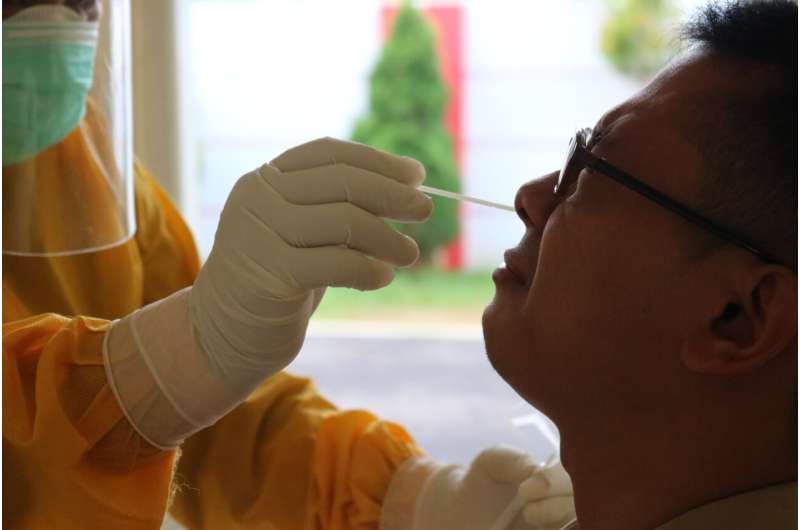
As the highly transmissible delta variant of the virus that causes COVID-19 surges in the United States and around the world, rapid and accessible COVID-19 testing and increased vaccination are key to managing the virus’ spread. Nasopharyngeal (NP) swabs—long, medical-grade probes used to collect samples from deep in patients’ noses and throats—are the gold standard for COVID-19 diagnostic testing. However, memory of shortages of both the specialized NP swabs during the early days of the pandemic as well as pressure on the trained medical personnel needed to perform the tests point to the need for simpler COVID-19 testing.
In a real-world trial, a team of clinician-researchers at Beth Israel Deaconess Medical Center (BIDMC) have demonstrated that tests of self-collected saliva provided comparable results to tests performed by trained healthcare professionals using NP swabs. The researchers concluded that saliva tests detect 93 percent of COVID-19 infections in an outpatient setting. The findings, which are published in the journal Microbiology Spectrum, could help alleviate the testing bottlenecks that have constrained COVID-19 testing since early in the pandemic.
“Saliva self-collection is simply easier and more comfortable than the alternative of NP swabs, which in addition to the discomfort also require a trained medical professional,” said corresponding author Ramy Arnaout, MD, DPhil, associate director of the Clinical Microbiology Laboratories at BIDMC. “In addition to it being a more convenient method, our findings show saliva collection can also be just as effective—even in a real-world scenario in which there are no eating or drinking restrictions before the saliva is collected.”
Arnaout and colleagues obtained two samples—one via NP swab, the other saliva—from 385 patients presenting for COVID-19 testing at BIDMC. Patients waiting in line for NP testing were given a sterile sample collection cup and asked to provide a three milliliter saliva sample. Saliva samples were processed either untreated or treated with a preservative, and all samples were tested across two different COVID-19 testing platforms.
After finding that virus particles remained stable in both treated and untreated saliva samples for at least 24 hours, the researchers demonstrated high concordance, or agreement, between saliva testing and NP testing. That is, results came back the same in 93 percent of cases. Among the 385 samples taken, just nine had mismatched results between the NP and saliva test results. Most of the mismatches were at very low viral loads, making them clinically less worrisome, and saliva detected as many infections that NP missed, as vice versa.
Arnaout and colleagues reported that the sensitivity of NP testing was still slightly higher that of saliva testing, with NP testing able detect viral particles at lower concentrations. However, the researchers found that saliva testing is still likely to detect 90 percent of COVID-19 infections, and concluded that the minor loss in sensitivity is outweighed by the ease and safety of self-collection.
“We have demonstrated that for practical purposes, saliva is comparable to NP swabs for COVID-19 testing in outpatient settings,” said Arnaout, who is also associate professor of pathology at Harvard Medical School.
Source: Read Full Article
